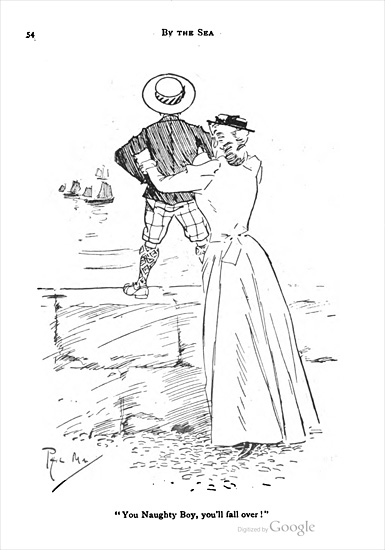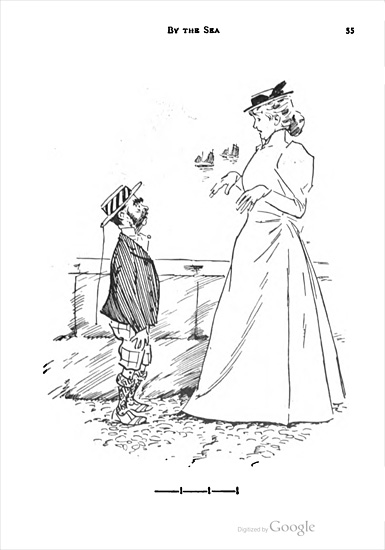Phil May’s 19th Century Drawings and Process
There is a brightness and daintiness in what he does, combined with knowledge.
These, together with the fact that in his drawings the wit is the artist’s, make a
vast difference between him and his contemporaries.
—James Abbot McNeill Whistler, catalogue for 1895 exhibition
| Mr. Phil May on Himself selections from Gutter-Snipes Table of Figures May’s Beginnings at St. Stephen’s Acknowledgments |
|
Reading any text or image from a century other than one's own brings some risk; lack of familiarity with reference, custom, country, or news of their day may simply, sans advising expert or footnote, leave you to misunderstand something of the narrative, or in the case of Phil May, to miss the joke.
And though sometimes this is the case in May's work, other times the humor—as in the panels that follow—is timeless. (A variation of the gag below appears in the second season of ABC’s Modern Family.)
 |
 |
By all accounts Phil May came to London from Leeds at the age of seventeen, a self-taught illustrator, with no resources or prospects, living for a time on the streets. In a short piece on process entitled “Mr. Phil May on Himself,” May gives a brief account of this hardship and then speaks to his artistic process. His drawings show the influences of his early experience with street life in London, perhaps no more so than in his 1896 volume Gutter-Snipes, from which our Gallery selections are taken. The fifty drawings collected in that volume are among May’s most transparent, not because the situations dramatized are any less complex, but because you do not have to recognize the name of a leading public figure or the face of a member of Parliament to get the joke. The images of street children—and adults around them—remain largely universal and recognizable to readers across the intervening century.
May’s Gutter-Snipes was published by experimental printer and publisher—and personal friend—Andrew Tuer of Leadenhill Press. Presented in this issue of Blackbird are twenty-nine drawings led by the volume’s illustrated dedication, “This to That,” a self-portrait of Phil May facing Andrew Teur, both of them smoking cigars. Drawings of May and Teur appear twice more in the book, once in an opening letter from May to Teur, and again as street graffiti in “Brother Artists.”
It’s worth noting that May does a little 1896 product placement for Tuer in Gutter-Snipes. Among other inventions—including the first writing pad with detachable sheets—Andrew Tuer developed “Stickphast Paste,” a product that sold widely in his lifetime, and after. In “Shuttle Cock,” on a building just above the heads of the two women talking near center, appear the words “Stickphast Paste Sticks.”
Following the selections from Gutter-Snipes is a brief account by editor William Allison of hiring Phil May to work for the St. Stephen's Review in 1883. May left St. Stephens in 1885 to take a job at the The Sydney Bulletin in Australia "for his health," and for a higher salary. May would return to England in 1892 to again do work draw for St. Stephens and many other London publications, inluding Punch, and his own Phil May Annual.
Allison's remembrance of May reprinted here—part of a longer work entitled My Kingdom for a Horse—was published in 1917, more than thirty years after their first meeting, fourteen years after May’s death in 1903 at the age of thirty-nine. ![]()